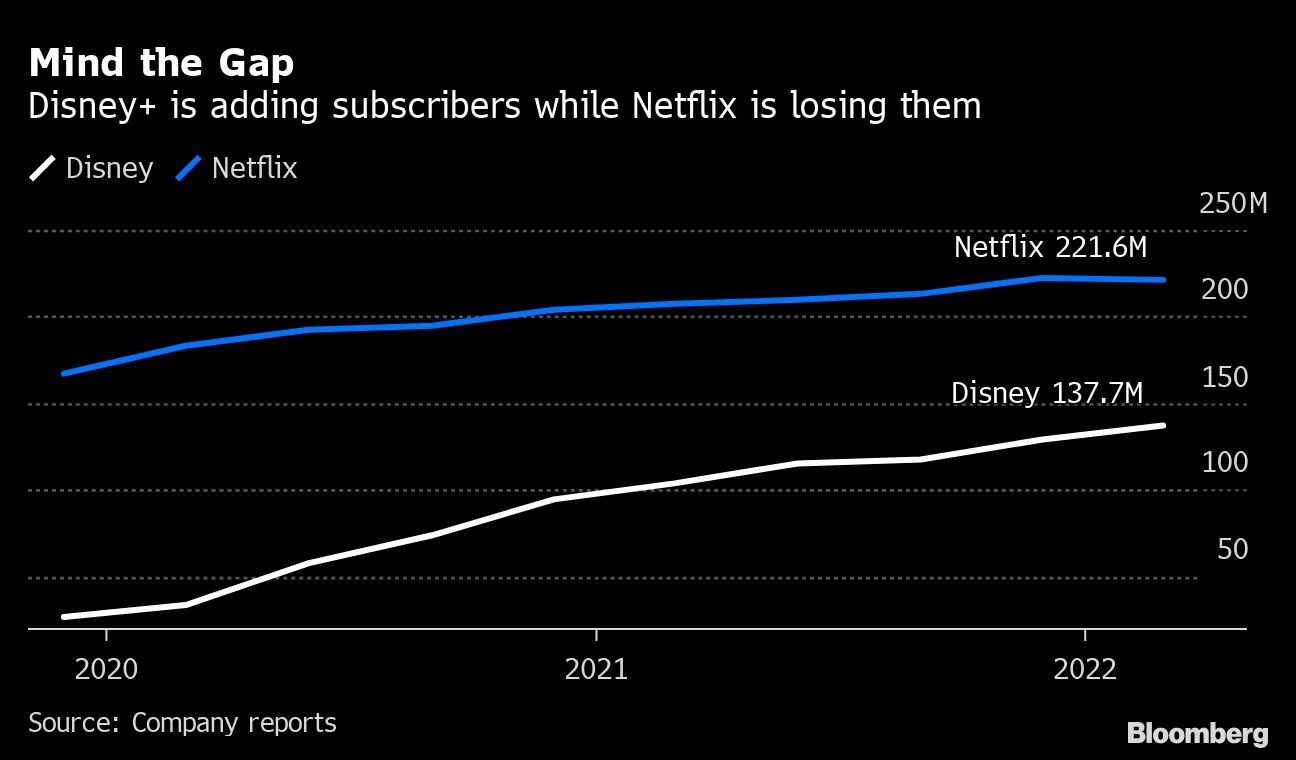May 11, 2022
Disney tops streaming subscriber estimates, tempers outlook
, Bloomberg News
I like the first quarter report, and I think Disney can make it compared to competitors: Analyst
Walt Disney Co. reported subscriber gains for its flagship streaming service that exceeded analysts’ estimates, but tempered its outlook for the balance of the fiscal year and said it will trim spending on movies and TV shows.
“We’re very carefully watching” content spending, Chief Executive Officer Bob Chapek said Wednesday on a call with investors after the entertainment giant reported fiscal second-quarter results. The company lowered its projection for overall film and TV spending by US$1 billion to US$32 billion this year.
Shares of Burbank, California-based Disney initially rose after the company reported better-than-expected growth at its flagship Disney+ streaming service. The service finished the quarter with 137.7 million subscribers globally, up 33 per cent from a year ago, the company said. Although the gain was smaller than the growth the service saw in the prior three months, it was higher than Wall Street estimates of 134.4 million.
But the stock reversed after management said growth in the second half of the year may not be as fast as previously expected. The stock was down 32 per cent this year through the market’s close on Wednesday, making it one of the biggest losers in the Dow Jones industrial average. It was down 2.7 per cent to US$102.40 at 11:53 a.m. Thursday in New York.
Investors were expecting slower growth after Netflix Inc. shocked Wall Street by reporting a surprise drop in subscribers and forecasting an even steeper loss in the current quarter. That led the company, the streaming industry leader, to tear up its playbook and announce plans for a lower-priced version of the service that includes advertising.

Disney’s other streaming services, Hulu and ESPN+, posted total subscribers of 45.6 million and 22.3 million respectively.
The gain in streaming coincided with a complicated quarter for the company. Disney’s earnings rose to US$1.08 a share, but missed the US$1.17 average estimate of analysts due in part to sharply higher taxes paid in international markets. Sales in the period ended April 2 jumped to US$19.2 billion, but trailed the US$20.1 billion forecast on Wall Street after the company lost US$1 billion in licensing revenue as it focuses on its own streaming business.
Theme parks were strong as expected. Earnings at the company’s resort division increased to US$1.76 billion from a loss last year as guests returned in force to its hotels and theme parks. Among the new attractions opening in the quarter were the Star Wars Galactic Starcruiser, an all-inclusive hotel with Star Wars characters that costs US$4,800 for a two-night stay for two guests.
But the company also cautioned that park closures in Shanghai and Hong Kong could crimp operating income in the current quarter by as much as US$350 million.
In February, Chapek warned of a challenging first half but predicted streaming subscriber growth would accelerate in the second half of the year, when new film and TV projects are ready and new markets are added. Streaming video is a key growth area for Disney, which like other media companies is seeing a dwindling audience for traditional TV.
Executives on the call said the company plans to introduce Disney+ in 53 new markets by the end of the current quarter, but some places, like Poland, are seeing disruption due the war in Ukraine.
Profit in the company’s traditional TV division fell 1 per cent to US$2.82 billion as higher sports programming costs offset advertising gains.
The loss at the company’s direct-to-consumer unit more than doubled to US$887 million, due to higher investments in film and TV content, partly offset by higher advertising and subscriber revenue.


